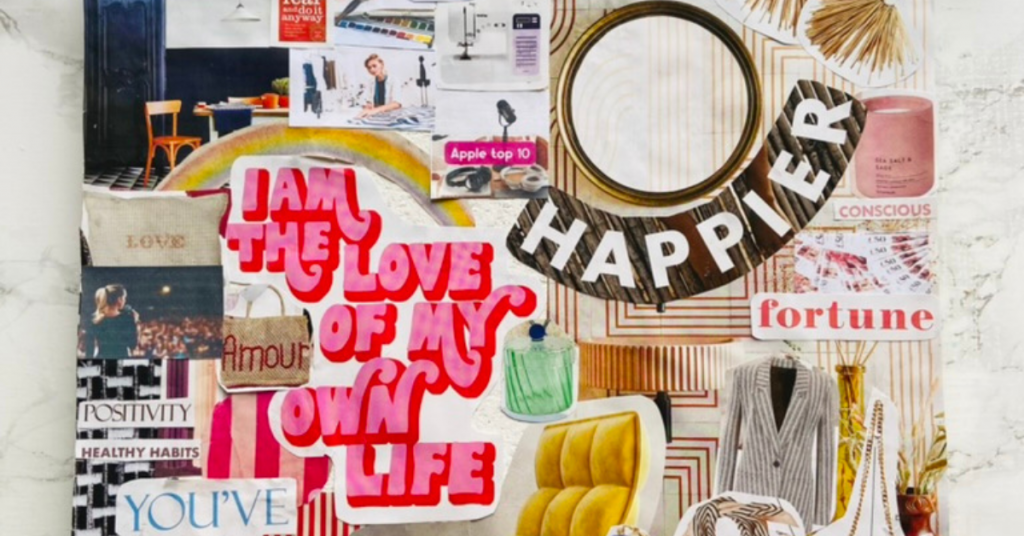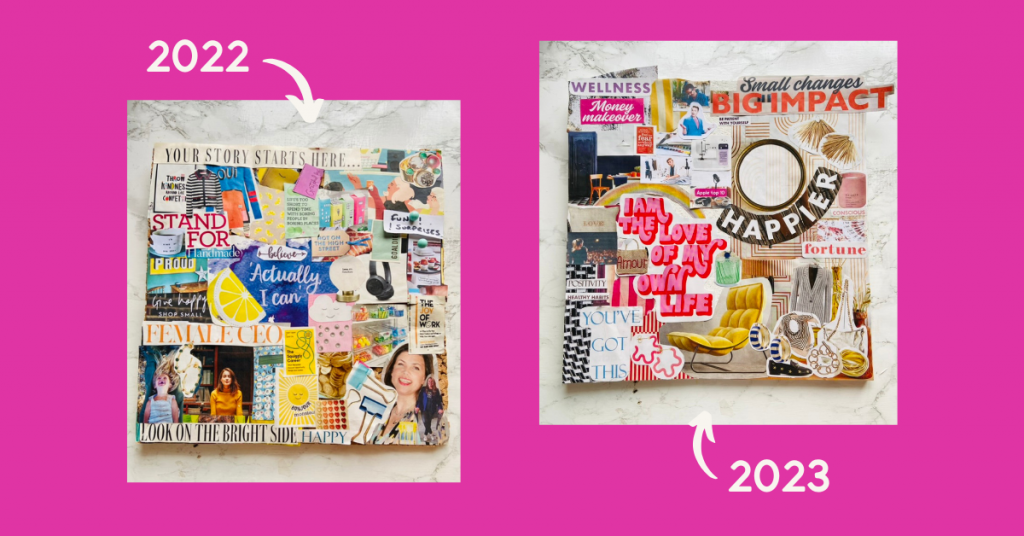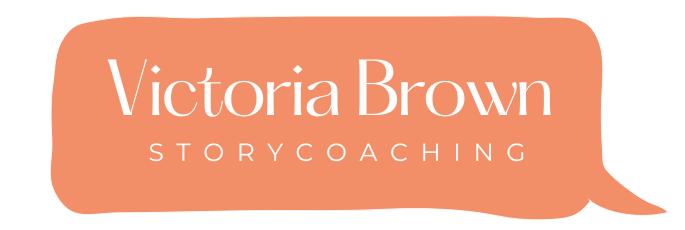
Are you thinking about starting a vision board?
I started creating old-school vision boards (with primary school style cutting and sticking) last year – and I LOVED it. The process was so therapeutic. And what surprised me about the whole thing was how much clarity the whole exercise gave me, not only around my goals for the year, but also around how I wanted the year to feel. So in this blog post, I’m going to show you, not only how amazing vision boards are, but also how you can make your own.
I found creating the vision board not only helped to get my goals and dreams down on paper, in a visual format, but it also actually helped me to realise what the goals are in the first place. Hands up if you’re out of practice with asking for what you want?! I certainly am. We get so used to going along with the flow, keeping everyone else happy first, that we may think it’s selfish to think about what we really want from life.
You’re capable of so much more than you realise.
But how often do you actually sit down and think about how you want your life to look? The fact is, we’re all out of practice of dreaming, of understanding what those dreams are. But if we’re not intentional about what we really want, how can we ever create it?
Creating a vision board is (for me) a great way to tap into my subconscious mind and find out what I really want. You know, deep down under all the people-pleasing rubbish. (Not that it’s not good to care about others, but it’s like the old plane/oxygen scenario: how can you expect to help others, if you’re not ok yourself?)
Don’t just listen to me. Visualisation has been proven to be a really powerful tool for making our goals and dreams happen. It may sound like a load of old woo – but to those of you who are scientists – this has actually been proven – so definitely worth having a go.
As neuroscientist, Dr Tara Swart (2019)* explains, there are definite benefits to creating a real-life version vision board: “An action (vision) board will be the ultimate manifestation of priming your brain to design your life. The fact that you create it with your own hands and see it every day in full colour activates numerous pathways in your brain (tactile, visual, emotional, intuitive and motivational), sending them the core message about what you truly want far more powerfully than just reading a list or thinking about your goals from time to time will ever do. Harnessing the concept of selective attention, combined with the neuroplasticity of behaviour change, reaps results.”
How I create my vision boards
I start by collating images that I’m inspired by and feel right to me (as well as thinking logically about my goals), and this year I was astonished what happened. Stripes and geometric patterns dominated my images. I realised it was because I was craving some sort of order and consistency in my working life. One of my goals is to put in more processes and to make things simpler, and more streamlined, so is it any surprise I was drawn to stripes?!
Also, I was drawn to a photo with a mirror. I didn’t think much about it at all, until I’d finished, and realised that I am doing a lot of work on reflective learning right now. How weird is that?
I love that a vision board can represent these goals and feelings so clearly, in a way that words can’t. And if you swipe across and see my other board, you’ll see a very clear difference in the way I’m thinking right now, compared to last year. There’s much more desire for order right now. It’s also much more focused on specific items (like my Creative Slurp Podcast) than it was last year. And that’s because I have more clarity now than I did last year.
Let me show you what I mean… check out my board from 2022 and 2023, and see how different they are in style:

Here’s how to create your very own real life vision board:
Materials:
- Scissors
- Pritt Stick (in my opinion, it’s always the best quality paper glue – I don’t know why?)
- Big pile of magazines/brochures (Top tip: save them up a few months beforehand)
- Access to computer and printer (optional)
- Small corkboard (I use a square one)
What to do:
1. Think about what you want to feel and achieve this year and write it down.
Look for images of these things (or relating things) in your stash of magazines. You could use the actual image of something, or represent that idea with another image (for example, using a lightbulb to represent ‘ideas’). If there are actually super *specific* things or people that you know you want to put on your board (for example, I knew I wanted to put a sewing machine on there, as I want to learn to properly make clothes this year), then search them out on the computer and print them out, if you can. You’re unlikely to find them rifling through a bunch of random magazines. I usually leave these kinds of images until last and add them in if they’re missing.
2. Take some time to go through my magazines and cut out any you’re drawn to.
There’s not always a rhyme or reason to this. Just follow your gut instinct and cut out whatever you feel connected to. I find this is a really powerful exercise, as sometimes there are goals and dreams in my subconscious that I’m just not aware of. Then when I actually see them visually, I connect with them on a deeper level and suddenly realise it’s something I simply HAVE to put on my vision board – kerbang!
Doing this really helps you reach those thoughts and scratch below the surface to your real dreams – you know, the ones you haven’t dared voice – even to yourself – because you’re too scared. I find creating this two-pronged attack of finding images – both with intent and gut instinct – you get the best of both worlds. As well as images, you might want to also look at words/text – which can be equally powerful. You end up with a range of images to reflect both your known goals and desires, and the ones that are buried so far deep inside you that you may not even know they’re there.
But they’re important to your soul. Ignore these desires at your peril, because if you don’t, you’ll probably never feel completely satisfied from meeting your ‘surface goals’. Just using my gut instinct to find images was how I found out I was craving order when making the 2023 vision board. It was so weird how I was drawn towards images of stripes and geometry. So go with your gut instinct and see where it leads you. Make sure you allow yourself the time and space to really create – my boards usually create themselves when I do this.

3. Find a small board and start arranging the images, weeding out any that don’t feel right.
You’ve got all your images – usually through a mix of logically finding the ones you want, and also following your gut instinct. Then (and only then) it’s time to curate them. This is the fun bit! Slowly, weed out the ones you don’t feel so aligned with until you’re left with the ones you can’t bear to part with (and that preferably will all fit on your vision board).
Arrange your chosen images however you like on your board. Place your images on the board, however you feel is right. Weirdly, I find that even the way I choose to place the images reflects my goals and how I feel about them. For example, this year they were much more ordered – reflecting my desire this year for more order. You may find you want to weed a few more out at this stage – just go with it.
4. Stick ‘em on!
Stick on your chosen images wherever you’ve placed them. I just like to use a good old Pritt Stick/glue stick.
5. Hang your vision board somewhere you’ll see it every day.
This is important, as the whole point of any visualisation is that you’re regularly dreaming your goals and vision into real life. If you don’t see your vision board regularly, it’s unlikely to have an impact. I like to hang mine on my wall over the top of my computer, where I see it every day.

So that’s it.
Why not have a go at creating your very own personalised vision board, and see where it takes you? The act of creating it is as powerful as using the finished article to help you visualise your goals – but don’t take my word for it, give it a whirl and see if it works for you. Anything involving cutting and sticking has got to be worth a go, right?!
So what do you do when you want to actually bring these goals from the vision board to reality? Well, you’ve got to take action. Sounds obvious, but not always as easy as it sounds. The best way is to break them down into smaller, maybe monthly, actions and consistently work on them.
Keeping to this can be pretty tricky though. So that’s why I’ve created the Accountability Club – to help small business owners set, visualise and make their goals happen. We meet once a month to review and reflect on the past month and set priorities and goals for the coming month.
Find out more about Accountability Club (and maybe join us?) here.
Do you create vision boards? Chuck your top tips in the comments below…
*Swart, T. (2019): How to create a vision board to design your future
